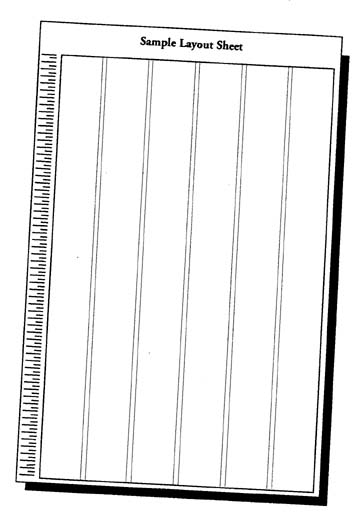
| next page in lesson--> | |
| Lesson
Three: Ad Layout Part 3: The Layout Sheet |
|

Ad Layout: The Layout Sheet
First, you'll need
to get your hands on a layout sheet. Here's an example of a standard layout
sheet that's probably similar to the one you'll be working with at your
newspaper.
You'll need to sell ads that will conform to the column width of the newspaper. The width of every newspaper page can be broken down into columns of equal size. You can usually see how wide a column is by looking at the how the editorial copy-the stories-flow in the newspaper. Usually the stories will run down columns 2 and a quarter inches wide, with an eighth inch blank space between the columns. And since ads usually appear on the same pages as the articles, or editorial, as we call almost any element that the editorial department creates, most newspapers will sell ads in one column width increments.
Although it would make sense that the column width that editorial uses will always match up with what advertising defines as a column, it's not always true. In fact, the actual width that a newspaper defines as a column can vary from newspaper to newspaper, and will actually vary within a paper. For example, you'll probably notice that the columns within the classified section where the line ads flow are narrower than in the rest of the newspaper. However, in 1984, to give advertisers a break who would be running the same ad in more than one newspaper, most of the newspaper industry decided to standardize the width of the columns on ROP pages to 2 and a quarter. ROP, by the way, means Run of Paper, which refers to the general paper, not including the classified section or any bonus special section the newspaper might be publishing that day.
![]()